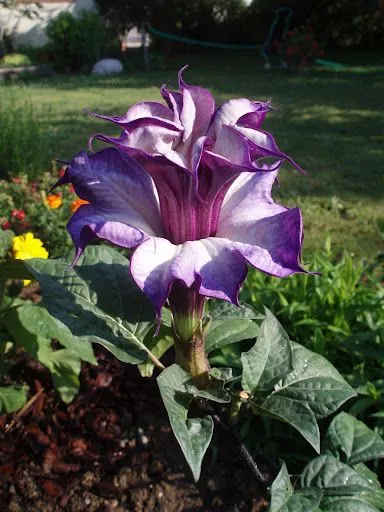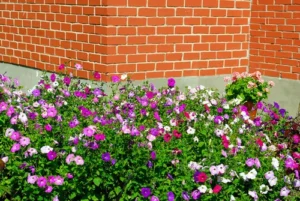Lily Flowers: A Comprehensive Exploration of Beauty and Symbolism
ahtashamawananwar@gmail.com September 24, 2024 0Lilies, with their exquisite petals and captivating fragrances, have fascinated humanity for centuries. As perennial flowering plants belonging to the genus Lilium, lilies encompass a vast array of species and hybrids, each contributing unique characteristics in terms of color, shape, size, and symbolism. This comprehensive guide delves deep into the world of lily flowers, exploring their diversity, cultivation techniques, symbolic meanings, and cultural significance.
1. Introduction to Lily Flowers
Lilies are among the most beloved and widely cultivated ornamental plants worldwide. They belong to the family Liliaceae and are native to temperate regions of the northern hemisphere, with a rich history intertwined with human culture and symbolism. The genus Lilium encompasses over 100 species, ranging from the iconic Madonna Lily (Lilium candidum) to hybrid varieties that grace gardens and floral arrangements globally.

2. Taxonomy and Classification of Lilies
Lilies are classified into several categories based on their genetic lineage and physical characteristics:
- Division by Genetic Parentage: Lilies can be broadly classified into true species, hybrids, and cultivars derived from various parental species.
- Division by Flower Shape: Lilies are categorized based on the shape of their flowers, such as trumpet-shaped (e.g., Lilium longiflorum), bowl-shaped (e.g., Lilium martagon), or recurved (e.g., Lilium lancifolium).
- Division by Time of Bloom: Lilies are also grouped by their blooming period, which can vary from early spring to late summer, depending on the species and variety.
3. Popular Varieties of Lily Flowers
Lilies are renowned for their diversity in color, fragrance, and form. Some of the most popular varieties include:
- Asiatic Lilies: These lilies are known for their early bloom time, vibrant colors (ranging from reds and oranges to pinks and yellows), and sturdy, upward-facing flowers.
- Oriental Lilies: Renowned for their large, fragrant blooms, Oriental lilies often feature intricate patterns and bold colors, such as deep purples, pinks, and whites.
- Trumpet Lilies: Characterized by their large, trumpet-shaped flowers and strong fragrance, trumpet lilies often bloom in shades of white, yellow, and pink.
- Tiger Lilies: Distinctive for their recurved petals adorned with dark spots, tiger lilies bring a wild and exotic flair to gardens.
- Daylilies: Although not true lilies (genus Hemerocallis), daylilies are popular for their extended blooming period and diverse colors, ranging from yellows and oranges to pinks and purples.
4. Cultivation and Care of Lily Flowers
Growing lilies successfully requires attention to specific cultivation techniques and environmental factors:
- Climate and Growing Conditions: Lilies thrive in temperate climates with well-drained soil and prefer full sunlight to partial shade, depending on the variety.
- Soil Requirements: Lilies prefer slightly acidic to neutral soil with good drainage. Amending heavy clay soils with organic matter improves drainage and enhances nutrient availability.
- Planting Time and Depth: Lilies are typically planted in the fall or early spring, depending on the climate zone. Bulbs should be planted at a depth three times their diameter, with the pointed end facing upwards.
- Watering and Fertilization: Lilies require regular watering to keep the soil evenly moist, especially during periods of active growth and flowering. Applying a balanced fertilizer in early spring and after flowering helps support vigorous growth.
- Pest and Disease Management: Common pests that affect lilies include aphids, lily beetles, and slugs. Proper sanitation, regular inspection, and appropriate cultural practices help minimize pest and disease problems.
5. Symbolism and Cultural Significance of Lily Flowers
Lilies carry profound symbolic meanings across various cultures and contexts:
- Purity and Virtue: White lilies, particularly the Madonna Lily (Lilium candidum), symbolize purity, virtue, and the Virgin Mary in Christian traditions. They are often used in religious ceremonies and floral tributes.
- Mourning and Sympathy: Lilies are associated with funerals and symbolize the restoration of the soul of the deceased to a state of innocence and purity. They convey sympathy and condolences in times of mourning.
- Femininity and Motherhood: Lilies are often associated with femininity, grace, and motherhood due to their delicate appearance and nurturing symbolism. They are popular in bridal bouquets and Mother’s Day arrangements.
- Easter Symbolism: Lily flowers, particularly white lilies, are symbols of resurrection and hope in Christian Easter celebrations, representing purity and new beginnings.
6. Famous Lily Gardens and Events
Throughout history, lilies have inspired the creation of magnificent gardens and events dedicated to their beauty:
- Keukenhof Gardens, Netherlands: Known as the “Garden of Europe,” Keukenhof features stunning displays of lilies and other bulbous plants, attracting millions of visitors annually during its spring opening.
- Chelsea Flower Show, UK: The Chelsea Flower Show showcases spectacular floral displays, including elaborate arrangements of lilies, highlighting their diversity and beauty.
- Japanese Lily Festivals: In Japan, lily festivals celebrate the cultural significance of lilies, featuring traditional displays, artistic arrangements, and cultural performances.

7. Uses of Lily Flowers
Beyond their ornamental value, lilies have practical and cultural uses:
- Cut Flowers: Lilies are popular choices for cut flowers due to their longevity in floral arrangements and striking appearance. They are commonly used in bouquets, centerpieces, and decorative displays.
- Perfumery: Lily fragrances are prized in the perfume industry for their sweet, floral notes, often used in creating sophisticated and elegant perfumes.
- Medicinal Uses: In traditional medicine, lily bulbs and flowers are believed to possess medicinal properties, used in remedies for ailments ranging from skin disorders to respiratory conditions.
8. Conservation and Preservation Efforts
Several lily species are endangered or threatened due to habitat loss, climate change, and unsustainable harvesting:
- Conservation Initiatives: Botanical gardens, conservation organizations, and government agencies collaborate to conserve rare and endangered lily species through habitat protection, seed banking, and reintroduction programs.
- Public Awareness and Education: Increasing public awareness about the importance of biodiversity and sustainable practices helps support conservation efforts for lily species and their habitats.
9. Future Trends in Lily Cultivation and Research
Advancements in horticulture and research continue to shape the future of lily cultivation:
- Hybridization and New Varieties: Ongoing hybridization programs aim to develop new lily varieties with improved disease resistance, novel flower colors, and enhanced fragrance profiles.
- Biotechnological Applications: Biotechnological techniques, such as tissue culture and genetic modification, contribute to the development of disease-resistant lilies and conservation of rare species.
- Climate Adaptation: Research focuses on developing lily cultivars that are resilient to climate change impacts, including drought tolerance and adaptation to changing environmental conditions.
10. Conclusion: Embracing the Beauty of Lily Flowers
Lily flowers, with their diverse forms, captivating fragrances, and rich symbolism, continue to enchant and inspire people around the world. Whether adorning gardens, symbolizing profound emotions, or contributing to cultural traditions, lilies hold a timeless appeal that transcends borders and generations. By understanding their cultivation techniques, symbolic meanings, and cultural significance, we can fully appreciate the beauty and elegance that lily flowers bring to our lives. Embrace the allure of lilies and enrich your surroundings with these exquisite blooms, celebrating their beauty and symbolism in all their splendor.
In conclusion, lily flowers represent not only nature’s beauty but also carry deep cultural and symbolic meanings that resonate across generations and cultures. Their diversity in colors and forms, coupled with their ease of cultivation and ornamental value, make lilies a cherished addition to gardens and floral arrangements worldwide. Whether you are a seasoned gardener, a floral enthusiast, or simply appreciate the beauty of flowers, lilies offer endless possibilities for enjoyment, symbolism, and creative expression.



